Looking Back at the Spring Season 2018
Anime overload!?
There have been so many long-awaited series streaming in Spring 2018 that I can’t be the only anime fan to have buckled under the pressure (can I?) and – reluctantly – decided to watch some and return to others at a later stage. Have you had the same experience? (It seems churlish to complain about feast rather than famine…)
However, have all the much-anticipated titles lived up to expectations? Have there been some bitter disappointments? Or some hidden treasures? The Anime UK News team are here to share some of their thoughts as we take a look back at what’s been streaming in the past few weeks.
Darkstorm
Another season’s worth of anime is done, and I wish to discuss three series, although, arguably, two of the three don’t belong here, despite being released and/or finishing around the Spring period. So, let’s start with a series that absolutely does belong here: Wotakoi: Love Is Hard for An Otaku. After the first episode, I felt positive about the series however I did not feel the need to continue it, that was until I kept seeing screencaps of the later episodes pop up on my Twitter feed, mostly around the confident and BL-loving Hanako Koyanagi. I’m glad I decided to give it another shot because I ended up binge-watching the episodes I had and catching sequential ones on release day; the show was pure delight! A fellow geek can fully enjoy all the references the anime has, as well as relatable otaku feels (I too have taken holidays off work just to play video games) but geek references can only get you so far. Luckily, its core concept of geek-romance for an older generation is strong because the characters are so good. I loved Narumi and Hirotaka as a couple; seeing them grow together and become better people (Narumi more comfortable with expressing her geekier side and Hirotaka gaining people skills) whilst going at their own pace with their new-found romance was lovely to see develop. I was saddened that it ended randomly on Episode 11; the series has no set structure, and aside from a handful of episodes, the rest can be watched in any order, but I could’ve easily kept watching the antics of these adorkable pairs as they continue to grow and have fun together. My only major gripe with the show was the pairing of Hanako and Kabakura; I loved them individually as characters and I think it’s great to get a romance anime that explores a couple that have been dating for an extended period of time. However their major conflict in Episode 4 was handled so poorly that I found it hard to enjoy their cuter moments in later episodes. The pair clearly have major issues to work through and having them not explored at all was a missed opportunity. But aside from that, I loved it, so like Thor once said, another!

Next up is Aggretsuko, which dropped unceremoniously onto Netflix back at the start of Spring; although its release had little fanfare, it certainly made waves after launch. Starring 25-year-old and single working-class girl Retsuko, who’s been in a dead-end job with a pig (literally) of a boss for several years, and whose only outlet is death metal karaoke in the evenings. The series follows her daily work frustration and gripes with finding her way in a world that demands (especially with 20s-30s females) to have it together with their careers and/or married with children. Like Wotakoi, this show strikes the perfect balance between comedy and relatable situations without going too hard with either to ruin the escapist yet sympathetic outlet the anime provides. The series starts slow but as Retsuko’s friendship circle expands, it picks up the pace, and I found myself really relating to her not just within the office space but just being a 20/30-year-old working girl in general. She’s quickly become an icon and well-loved for a reason, not just because she’s designed by the same people who created Hello Kitty.
The English dub especially deserves thumbs up for not only providing its own comical spin where the Japanese script can sometimes fall flat with Western audiences, but also for getting a proper death metal singer to really bring the karaoke/rage outbursts to life. As a metal head myself, I was obviously drawn in from just the mere mention of death metal but found myself a tad disappointed towards the end as each ‘death metal’ screaming session just used the same riff with altered lyrics each time. I know non-metal music lovers will argue that ‘all metal sounds the same’ but I can assure you that they don’t and I hope they bring in more variety in future seasons. All ten episodes are on Netflix and they’re only ten minutes’ long each, so there’s little excuse not to give it at least one watch.
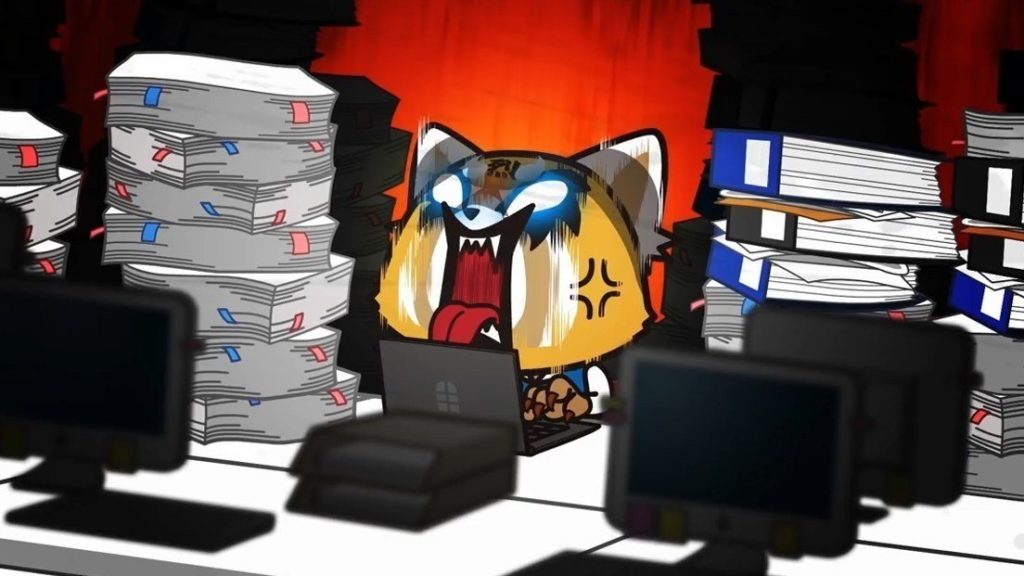
Then we have Cardcaptor Sakura: Clear Card, which finally ended its season a few weeks back. I’ve discussed previously my thoughts on the opening and when we reached the midway point, and now we’ve reached the end…I’m torn. On one hand, I loved the journey we went on; every nod to the original manga and anime, every attempt to keep continuity between the two, every cameo from Meiling to Rika, and every new card being a reflection of the old ones made me smile wider than any Cardcaptor Sakura episode or movie has previously. On the other hand, the mysterious plot only dropping hints sporadically and the incredibly slow build-up to a conclusion that in the end was left so open-ended, I couldn’t help but feel saddened and frustrated. Admittedly, the original series was also very slow to get the plot going, however I’d argue that the original series also had character and relationship developments across the cast, especially in the second half where greater focus was given to the various couples as they all contributed to the theme of love that CLAMP champions, and Cardcaptor Sakura is all about as well. However Clear Card sorely lacked in this department at the end; Sakura and Syaoran got some lovely scenes, and the date episode was 100% better than the manga counterpart, however afterwards we got next to nothing, with poor Syaoran getting the least amount of screen time and hardly any character development. As for Toya and Yuki? Completely underused and merely lip service towards the end, which was incredibly disappointing. There’s still no word on whether there will be a movie, series or OVA continuation, but surely there has to be, right? RIGHT?!
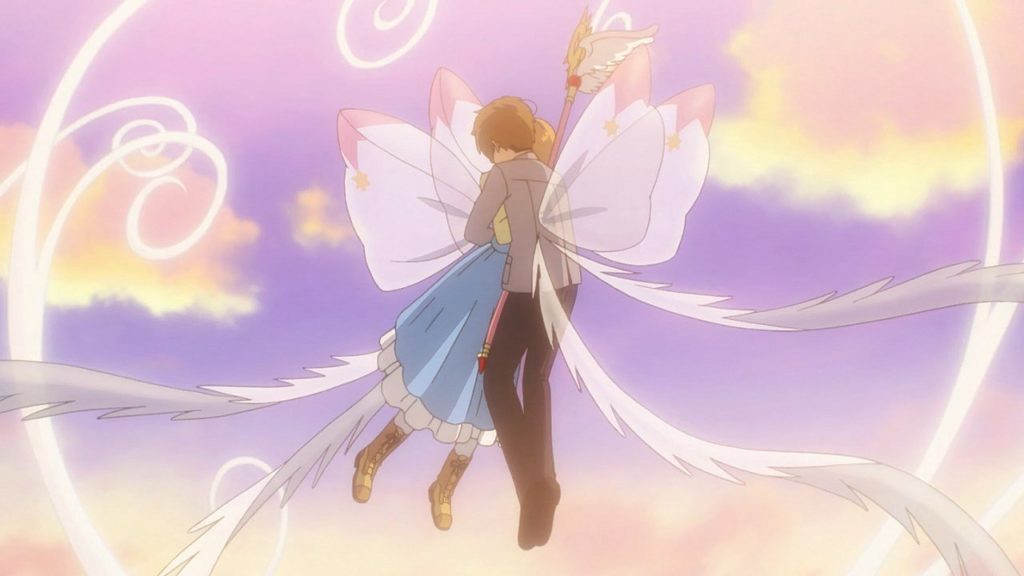
Demelza
Going into the Spring season I knew I’d be spoilt for choice. With the big shonen series returning (My Hero Academia, Food Wars!) and adaptions of a game and manga series I regard fondly, there was a lot to look forward to. To start off with I’d like to talk about a certain success story for a series I’d fallen out of favour with – Tokyo Ghoul:re.
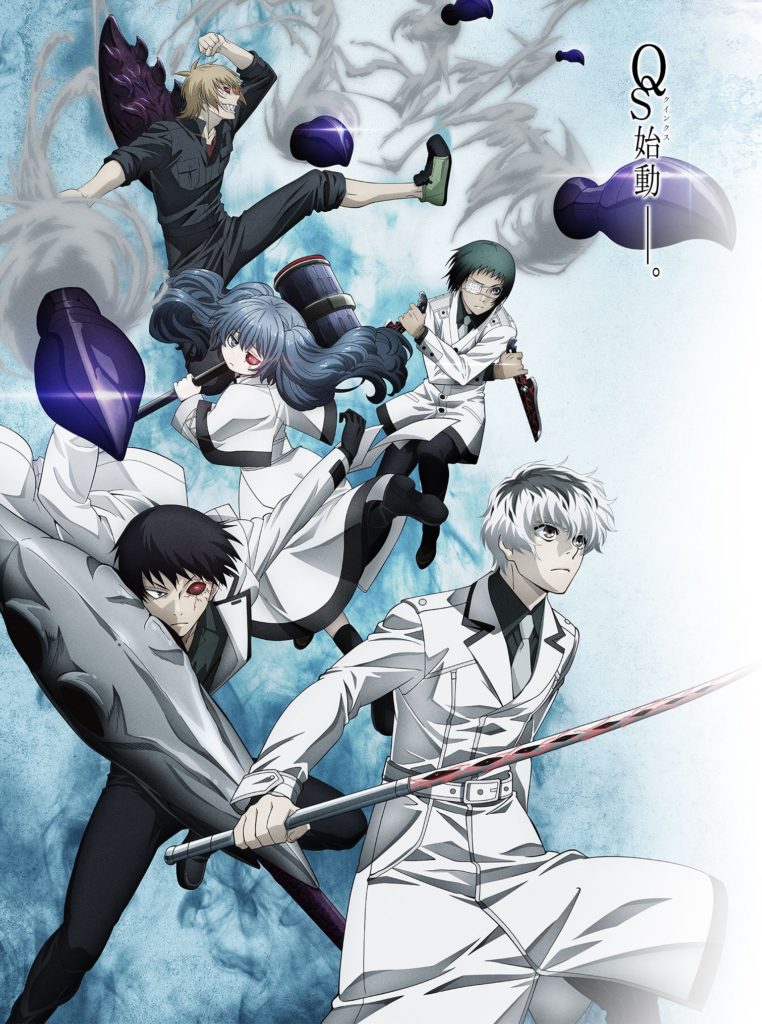
I’ve mentioned previously that despite having read and watched so much from the Tokyo Ghoul universe, I’m not actually a fan of the direction the story took going into re. When the original manga series finished, I decided not to begin buying volumes of Tokyo Ghoul:re, but with the anime airing this season I decided there wasn’t any harm in giving it a go. At worst I’d be wasting 25 minutes of my time a week. In the end, I’m glad I gave it a chance.
This season of Tokyo Ghoul brought the series back to what I always enjoyed the most – Ken deciding where he belongs. Ken Kaneki (now known as Haise Sasaki) is working as a ghoul investigator and has no memories of his life spent as Ken. As the season progresses we watch our hero begin to regain fragments of his past self and in doing so, he’s left to decide if he wants to remain as the person he is now or allow his old self take control. In the previous seasons of Tokyo Ghoul we watched Ken decide between the human and ghoul worlds and that was always incredibly gripping, so I was glad to see the show return to that aspect rather than lingering too much on the absurd fights between ghouls and the CCG. That said, Ken being a part of the CCG for this season also gave us the chance to take a look at a different side to the Tokyo Ghoul world and that was a welcome change.
Tokyo Ghoul:re will be returning in the autumn with its second cour. If it proves half as good as this cour has been then I can definitely see myself going back to collecting the manga.

With my success story out the way let’s talk about some of my other favourite series this season: Food Wars!. Now I normally refrain from talking about established shonen series as I often feel they don’t need the spotlight as other things, but given Darkstorm has already talked about my anime of the season – Wotakoi – I felt it time to dive into one of the bigger shows for a change.
This season saw the return of Food Wars! in the form of a second cour for Season 3 and this part covers one of my favourite arcs in the whole series. When we rejoin Soma and his fellow first year students, they are about to undertake Advancement Exams and if this wasn’t scary enough, Director Azami is using them as an excuse to kick out all of the rebels who oppose his new direction for Totsuki Culinary Academy. With the whole of Polar Star dorm in danger of being expelled, Soma must find a way of making sure everyone gets through the exams okay and he has an unexpected ally in Erina…
With Erina having taken shelter in Polar Star dorm after running away from home (because of her father Azami), she’s begun to change. Previously she’d never have dreamed that the young students at Polar Star would be anything notable, but during her stay, their cooking has changed her mind. She now understands how important their freedom is and vows to put a stop to her father’s plan. It seems that she might even have begun to warm to Soma, whom she previously couldn’t stand. This season has been all about Erina and finally giving her meaningful development. She’s always been heavily involved in the show from season to season, but this is the first time we’ve really gotten to see her inner feelings in detail.
At heart, Food Wars! is definitely more of the same, with its outrageous fan service, whacky characters and mouthwatering selections of food. While I keep coming back to it for all of these things, I do think this season gave us something special with its focus on Erina and I hope that when the anime does return (which, while not confirmed, seems likely!) it retains the spark that we’ve seen here.
Josh A. Stevens
It’s been a while since we’ve had a season as packed as this one! The return of My Hero Academia, Food Wars! and Tokyo Ghoul will no doubt have been popular with more mainstream anime fans, but that doesn’t mean those of us with more niche tastes were left behind either!
The real surprise of the Spring season for me though, was definitely Comic Girls, which is only the third anime series produced by Nexus (Chivalry of a Failed Knight). Based on a four-panel manga, the comedy series follows the timid Kaos as she moves to a dorm for aspiring young manga artists. With little confidence following a series of pitch rejections, Kaos finds both inspiration and friendship in the dorm’s other residents: the romantically inexperienced shojo writer Koyume, bashful ecchi artist Ruki, tomboy shojo scribe Tsubasa, and creepy horror writer Fura.
Each character is as different as the genres they write; each with their own strengths and insecurities that come to light across the series’ 12-episode run. Being a comedy series, these can be explored with humorous fanfare like Ruki’s embarrassment at her pen name “Big Boobies♥Himeko”, but Comic Girls is also not without its tender moments, where the emotional attachments made through the comedy really shine.
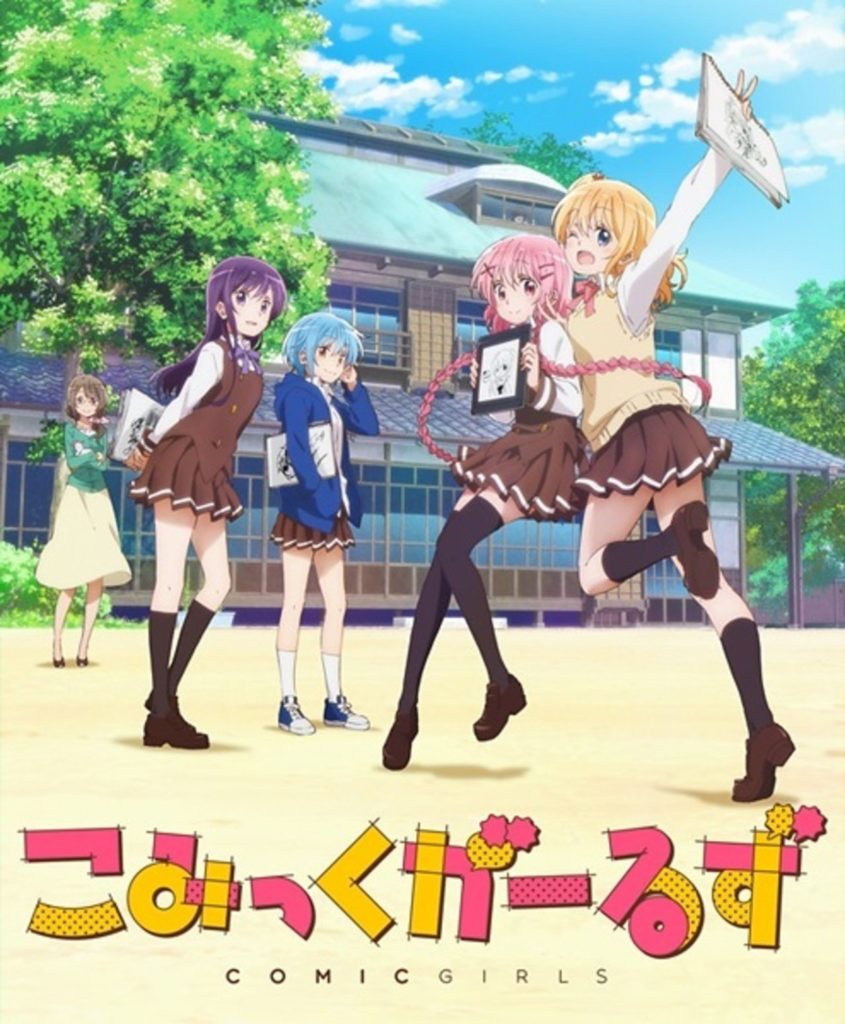
A particular highlight of the series, I have to applaud Usaku Myouchin as Episode Director of the series’ sixth installment (among others, making this series his debut in the post). Introducing the horror-obsessed Fura, the episode is wonderfully framed as if it had always belonged in the genre. The tone is quickly set with a striking exterior shot of the dorm, with a dark sky illuminated by a foreboding blood red moon replacing the usually vibrant, natural colour of Comic Girls‘ world.
Adding to this effect, is Reina Ueda (Sakura Quest‘s Shiori) really embracing Fura’s creepy vibe with a haunting performance, which is wonderfully matched by Hikaru Akao with the screams of the perpetually terrified Kaos; this is her first lead role and one that I’m surprised hasn’t ruined her throat!
As a budding writer, I’ve always been drawn to anime that shine light on the creative process, like New Game! and Shirobako. With its mix of endearing slice-of-life comedy and occasional insight into the deadline crunch-fuelled life of a manga artist, Comic Girls is definitely a worthy addition to that list.
Another series that really took me by surprise, was an unusual entry in one of those franchises that has, annoyingly, become “cool to hate”: Sword Art Online Alternative: Gun Gale Online. There’s little to dislike here though, as Keiichi Sigsawa of Kino’s Journey fame has expertly taken a minor element of Reki Kawahara’s original series and spun it into something special. As the name implies, this spin-off takes place in the post-apocalyptic shooter setting from Sword Art Online II.
The likes of Kirito are nowhere to be seen here however, as this story follows an all-new cast led by Karen Kohiruimaki, a tall young woman who wreaks havoc in-game as the pink clad, pint sized LLENN. Without the scale of consequence Sword Art Online is known for, LLENN is free to embrace that chaotic spirit that possesses us when we hold a controller, allowing her to earn acclaim for a playstyle that attracts condemnation in the main story: a player story. This leads to her gaining the attention of an unlikely mentor and later foe, the delightfully savage Pitohui.

With all due respect to Kawahara’s main series, the cast of Alternative is just… better. Kirito can at times feel like a flawless self-insert for the viewer, yet Karen is introduced to us through her flaws. The most obvious is the discomfort she feels towards her height, being drawn to Gun Gale Online purely because she could play with a smaller, cuter avatar. Her actions and behaviour in-game as LLENN show a refreshing moral ambiguity that the higher stakes of Sword Art Online‘s main story just doesn’t allow. For example, you’d never see Kirito excitedly announcing that he’d kill people, or hold another player at gunpoint for their ammunition. He’s just too much of a goodie-two-shoes compared to Karen!
While it may not be much of an achievement given the main series’ current record, Alternative introduces undoubtedly the franchise’s best antagonist yet. Pitohui is unhinged, unpredictable and the ensuing mayhem is an absolute joy to watch – especially as we know the squads she brutalises single-handedly won’t actually die! Her story is a lot more personal than those of prior Sword Art Online villains, creating a closer relationship with Karen than any Kirito has held with a foe.
Alternative also manages to avoid another flaw of Sword Art Online by totally discarding the over-used damsel-in-distress scenarios by positioning its female characters as being unique, powerful and most importantly, independent. A number of Sword Art Online fans I know bemoan how the once-badass Asuna has often been reduced to a damsel for Kirito to rescue, or how the cast around him have formed a “harem” that all want his affection. In Alternative however, we have Fukaziroh rocking two grenade launchers as she blasts a whole squad into oblivion. The kind of players who would act in an untoward way around women are also quickly reduced to punchlines whenever they make infrequent appearances too, so it’s clear that Alternative has no time for that complaint about Sword Art Online.
Despite only having half the episodes of a single Sword Art Online series, Alternative‘s fun characters, chaotic action and desire to just be fun easily make it the franchise’s best instalment yet – a sign of what can happen when a great idea is in the hands of a better writer. It’s also totally newcomer-friendly, so even if you only have a basic understanding of Sword Art Online, you can jump right in.
Cold Cobra
It’s certainly been a busy spring period for anime, and while there are a few shows I could pick, I’ll start off with the obvious, so obvious that many of my fellow writers have just mentioned it in passing: My Hero Academia.
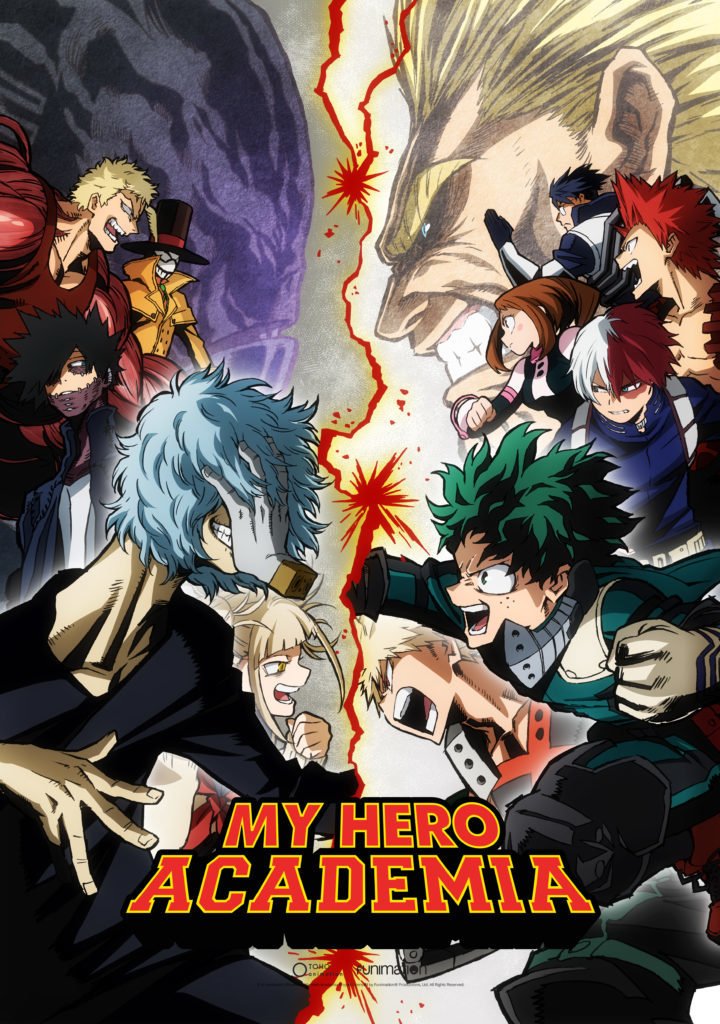
Taking the seasons format I wish all Shonen Jump! manga would take, rather than year-long weekly format, MHA has put on another fine set of episodes, adapting the manga at a good pace, never running through material willy-nilly, but always making sure no dramatic fight or humorous skit goes on too long either. As heroes and villains started duking it out in the middle of a big city and perennial top hero All Might squared off with an old nemesis I was gripped, genuinely looking forward to the next episode all of the following week. A cast of such likeable characters and great villains combined with great animation and pacing, My Hero Academia is a shonen fan’s dream, and I’m sure it’ll probably be my pick as best for the Summer Season as well!
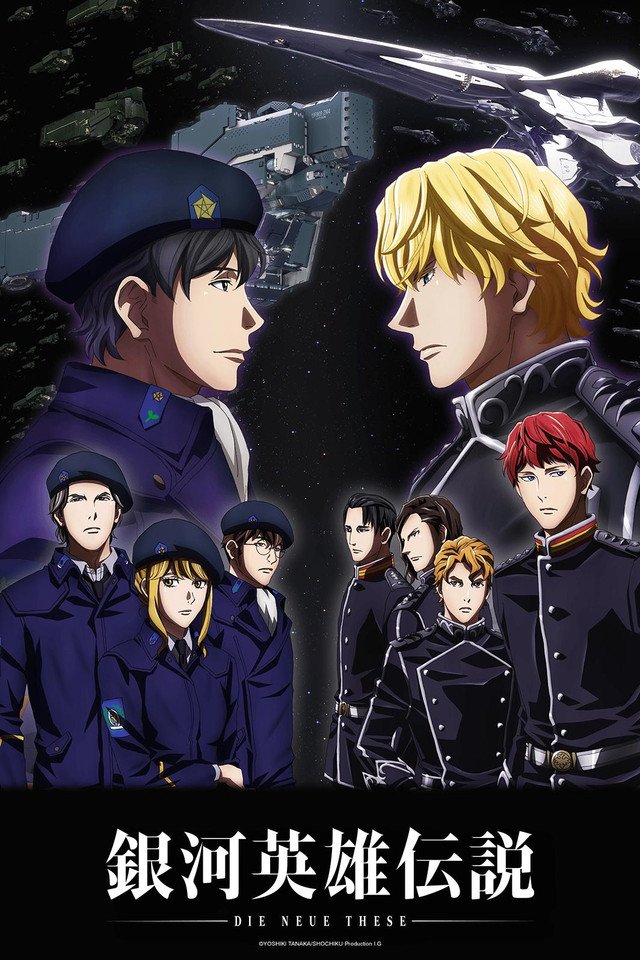
I’ll also mention the latest adaptation of Legend of the Galactic Heroes, with the subtitle “Die Neue These”, or “The New Thesis”. It’s been really entertaining, once again, able to pace itself well using the source material, and switching between both sides of the war when needed. Some of the large-scale battles look a bit “copy and paste the same CGI ship over and over”, but it doesn’t take away from some fun space battles, and an old “amazing strategy” scene or two. I only have passing knowledge of the original novels and the first anime adaptation, so maybe that helps (I know a few fans aren’t happy with some changes) but either way I wasn’t really expecting to end up invested in the show this much. It’s a shame the show’s second “season” will be done via films, as they’ll take a lot longer to enter the UK market legally…
Passing mentions to Persona 5: The Animation (which is such a close adaptation of the original game it’s frankly weird) and Gundam Build Divers (which is such an innocent children’s toy advert-style show that I can’t help but watch it with a smile on my face). So yeah, roll on Summer… where most of these shows will continue to air!
Sarah
‘kay – who’s going to own up? Me, then. I haven’t been able to keep up with even half of the series I started. But I stayed with several of the less loudly-promoted titles and was rewarded with some really feelgood, touching and genuinely amusing moments. If you’ve overdosed on Ghouls, Superheroes or mecha battles, these are recommended for a change of pace; don’t be put off, as they’re far from dull.
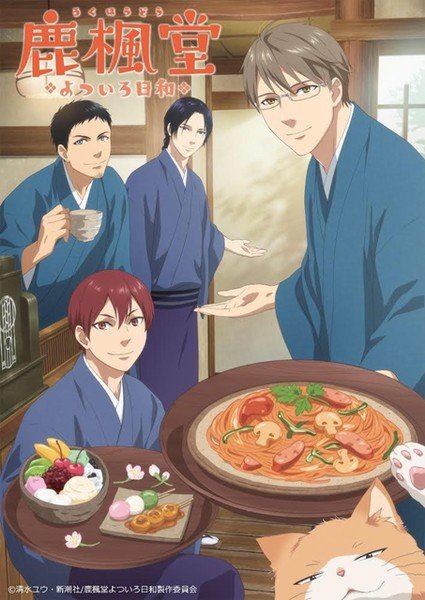
Yotsuiro Biyori takes us to traditional Japanese tea house Rokuhoudou, where we get to know the four young men creating the food and restful ambiance and their customers. Manager (and tea expert) Sui inherited Rokuhoudou from his grandfather and is doing his best to maintain the welcoming atmosphere his grandfather created. Gure (Gregorio) is the lively and cheerful half-Italian barrista who’s especially proud of his latte art – although the results are generally acknowledged to be ‘scary’. Tsubaki is the patissier and is passionate about cakes and desserts, always keen to seek out new recipes. Tokitaka, the chef, is also a master potter and his ceramics are in general use in the Tea House. And last, but not least, is Kinako the ginger cat; calm-natured Sui is crazy about cats and we get glimpses of another side of his personality when he’s caught playing with Kinako. We learn later that Sui has an identical twin brother – with whom he has had a falling-out – but a question left unanswered is why the two have gone such different ways. Each week introduces new customers who find their way to Rokuhudou: a salaryman who’s so busy that he forgets to eat and arrives in a state of near-collapse; a journalist desperate to impress his (female) editor with his food writing. Everyone who comes finds a distraction from their daily worries and delicious food and drink. The way Tsubaki and Tokitaka devise their recipes and theme their menus to reflect the seasons is lovingly portrayed – a complete contrast to the frenetic, competitive high-stakes cooking battles in Food Wars!. By the end of each episode, you feel you’d really like to visit Rokuhoudou and be welcomed by such attentive and skilful staff. Even the ED, “Clover” by Coffee Creamers, is restful and attractive: water colour images of food and flowers, accompanied by vintage music evoking a time fifty, sixty years ago… and no singer, just instrumentals.
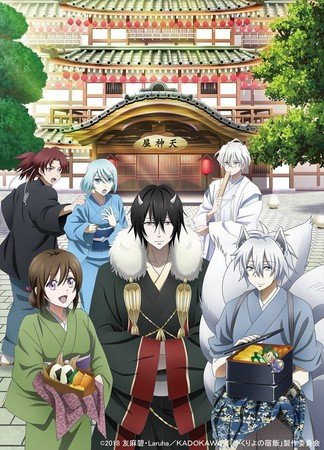
It’s been all about traditional Japanese cooking this season, and on-going series Kakuriyo – Bed & Breakfast for Spirits puts a spin on the ‘setting up a restaurant’ plot by taking heroine from the present day into the hidden realm of the ayakashi. College student Aoi has just lost her grandfather – when an oni/ogre (dark and good-looking) appears to claim her as his bride in repayment for a huge debt it seems her grandfather owed him. He is the master of the famous hidden realm guesthouse Tenjin-ya (evoking fond memories for Ghibli fans of Spirited Away). She refuses, insisting she will work off the debt by running an eatery, aided by silver-haired Ginji, a nine-tailed kitsune. Aoi’s inventive cooking soon gains favour with her customers, from an important tengu lord to O-Ryo, a yuki-onna (snow woman) working at Tenjin-ya. And slowly, a relationship begins to develop between her and the master. Aoi is far from being a wan and helpless heroine; her quiet determination to make her eatery Moonflower a success in spite of the many obstacles put in her way makes for a satisfying watch. A cast of colourful and interesting characters draws the viewer in, as does the depiction of the hidden realm with its flying boats and tantalising secrets. A good OP too for the first set of episodes, “Tō no Manimani” sung by Nao Tōyama, Aoi’s VA, with ‘Japanese’ instrumentation that helps to evoke the ‘otherness’ of Aoi’s new life. If you like human/ayakashi stories like Kamisama Kiss, The Morose Mononokean or Norigami then you’ll definitely enjoy this – and there’s added cooking! (Streaming on Crunchyroll – but also available dubbed on Funimation.)

I really liked the genre-busting craziness of Mahou Shoujo Ore – as well as the macho character designs – but felt that this 2-volume manga adaptation would have worked better as a 7-minute weekly episode; there was just not enough material to be stretched out to 12 x 22 minutes, even with the addition of two extra magical girls and an Osamatsu-san tribute episode sending up the animation industry (neither in the original manga). Much more successful in the ‘crazy’ department is Space Battleship Tiramisu which will return in the autumn. The mishaps of mecha pilot Subaru in space – and that stirring, manly opening theme! – will appeal to anyone with a fondness for Red Dwarf and, at seven minutes an episode, this never outstays its welcome. Available on Crunchyroll and Funimation in a ‘creative’ US dub, it’s worth watching in Japanese and English to compare and contrast how both versions portray Subaru’s obsession with his cockpit. This series takes itself very seriously – and is all the more funny for doing so. (It’s worth noting that Studio GONZO are not defunct and have been involved in the making of Tiramisu and Kakuriyo.)
Last of all, Tada Never Falls in Love over on HIDIVE, never quite reached the high standards of the creative team’s earlier success Monthly Girls’ Nozaki-Kun although it managed to remain a fun – and occasionally touching – light romantic comedy watch. Which maybe goes to prove that it’s much harder to create an original anime series than to adapt an existing manga or light novel…


